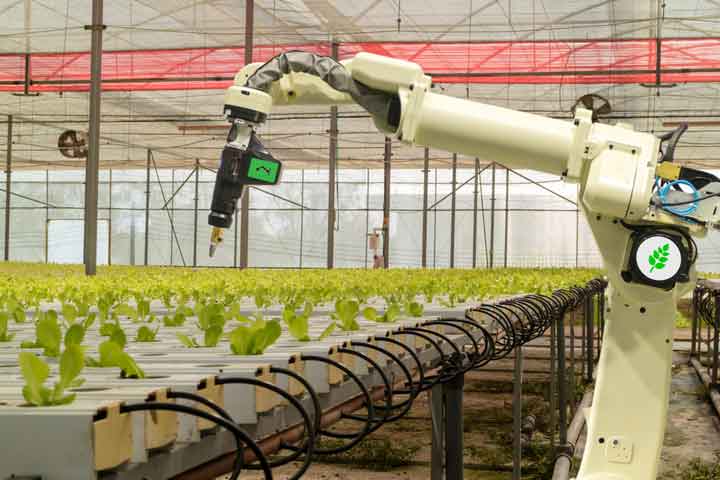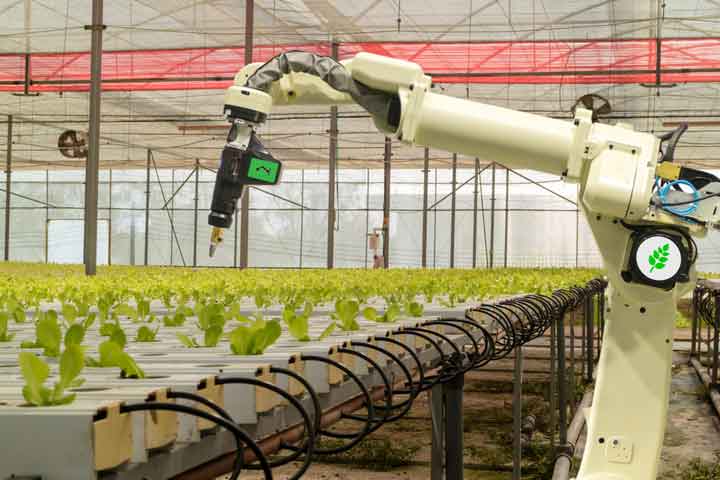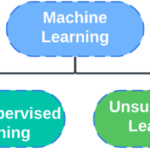
Introduction
A lot of work is required for harvesting, managing, and planting agricultural products. Unfortunately, farmers all across the globe find it difficult to find adequate workers for their fields. There are some experts who blame the pluri-annual decline in the number of immigrants coming to the developed and developing economies for seasonal work. On the other hand, others believe that the challenging demands of agricultural work can’t be matched with by the aging population of employees.
Irrespective of why farmers can’t keep pace with the demand, the tech companies provide a solution to the farmers that requires very little from the workforce. Farms can be turned into new generation of agriculture robot, instead of depending on human employees. As per the Research Dive analyst review, the agriculture robot reduces the time and decreases manual workforce as they work intelligently and autonomously.
Table of contents
The New Generation of Agriculture Robots
The modern agriculture has been always relied on machines in order to make work more efficient and easy. Even the smallest farms use harrows, plows, and cultivators. However, the novel generation of agriculture robot has a higher level of sophistication, which makes the automation possible. There are a number of robots available in the market that do more than automate harvesting and planting. This agriculture robot uses artificial intelligence to improve a farm’s success by making better decisions.
Crop Monitoring and Analysis Robots
The next generation of agricultural robots includes machines that can monitor and analyze crop health in real-time. These robots, often in the form of drones or autonomous ground vehicles, use advanced sensors and imaging technologies to collect data on plant health, moisture levels, nutrient deficiencies, and pest or disease presence. This real-time and detailed data allows for precision farming practices, like targeted pesticide use and irrigation, enhancing crop health and productivity while minimizing environmental impact.
Improving Crop Yields by Controlling Weeds
Farmers and scientists are well known with the fact that nearly 250 weed species have developed acceptances to herbicides. North America’s corn and soybean growers will lose nearly $43 billion a year to lost crops if herbicides unexpectedly stopped working.
A See & Spray robot from the Blue River Technology is solving this problem. The agriculture robot uses computer vision to identify weeds and patrols the farmland. The robot directly spray herbicides on the invasive plants as soon as it encounters a weed. It is estimated by the company that its precision technology of spraying can decrease the amount of herbicide used on farms by nearly 80%.
The species can be prevented from developing resistance of herbicide by using sophisticated agriculture robot to spray on specific plants. This would help in keeping the chemicals out of waters reach, which will eventually improve environmental conditions. Currently, the producers of cotton are the only one who have tasted the fruits of See & Spray. However, it would be interesting to see the advancements in technology, which will be useful for farms that grow other types of crops.
Controlling weeds is a significant challenge in agriculture. Next-generation robots are being developed to identify and eliminate weeds precisely without harming the surrounding crops. These robots use machine vision and AI to distinguish between crops and weeds and apply targeted treatments or physically remove the weeds. This precision weed control can significantly reduce the amount of herbicide used, resulting in both cost savings and a reduced environmental footprint.
Harvesting Agriculture Robot Reduces the Need for Manual Workforce
With the younger generation showing no interest in farming, it is quite doubtful that the agriculture industry will be flooded with more workers. Thus, purchasing harvesting agriculture robots is a practical option for farmers, which will reduce the human efforts in farming.
When vegetables and ripe fruits sit in the field, insects, weather conditions, and time could make the crop unusable. There are several companies in the agriculture robot market who have already developed and designed harvesting robots to harvest crops at the right time, and increase profits. An AI-equipped robot of Panasonic Company determines the ripeness of tomatoes by using image recognition and also collects them.
Intelligent Agriculture Robot Improves Crop Yields and Soil Quality
According to the USDA, poor soil quality reduces yields and lead to unhealthy plants. Every year, around $44 billion is the cost paid by farmers for soil erosion.
Companies like PEAT and CropDiagnosis have built apps that help farmers improve and diagnose unhealthy soil conditions. These apps use GPS technology and imaging to suggest useful solutions and diagnose problems. Although, this technology cannot act without a proper human guidance, but it’s only a matter of time.
Autonomous Tractors and Harvesters
Autonomous tractors and harvesters represent a significant leap forward in agricultural robotics. Using advanced AI algorithms, these machines can navigate fields, plant seeds, apply fertilizers, and harvest crops with minimal human intervention. Their precision technology can optimize the use of seeds, water, and fertilizer, reducing waste and increasing yield. The use of these robots not only saves farmers time and labor but also helps in achieving more sustainable and efficient farming practices.
Robotic Greenhouse Management
Greenhouse farming provides controlled conditions for crop growth, but it requires intensive management. Emerging robotic systems can automate tasks like seeding, transplanting, pruning, and harvesting in a greenhouse environment. These robots can also monitor environmental conditions and adjust lighting, temperature, and humidity levels as needed, ensuring optimal growth conditions and reducing the need for constant human oversight.
Livestock Management Robots
In livestock farming, robots are being used to automate tasks like feeding, milking, and monitoring animal health. Robotic milking systems allow cows to be milked on demand, improving animal welfare and milk production. Robots can also monitor individual animals for signs of disease or stress, allowing for early intervention. The adoption of these technologies can improve efficiency and animal welfare in livestock farming while reducing the labor burden.
Advancements in Autonomous Tractors
Autonomous tractors are at the forefront of the next generation of agriculture robots. These tractors are equipped with GPS, sensors, and AI algorithms that allow them to perform tasks like plowing, sowing, and spraying autonomously. By optimizing routes and operations, autonomous tractors can reduce fuel consumption and improve field coverage efficiency, ultimately leading to higher crop yields and lower costs for farmers.
Drone Technology for Crop Monitoring
Drones equipped with high-resolution cameras and sensors are transforming crop monitoring. They can quickly survey large areas of land and provide farmers with detailed aerial imagery. By analyzing this data, farmers can identify problem areas, monitor crop health, assess irrigation needs, and optimize pesticide application, which in turn can lead to higher crop yields and sustainable farming practices.
Robotics in Precision Irrigation
Precision irrigation robots are designed to provide the optimum amount of water to each plant. These robots, armed with sensors, are capable of assessing soil moisture levels and dispensing water accordingly. This targeted approach to irrigation can lead to significant water savings and ensure that crops receive the necessary moisture for optimal growth.
Data Analytics and AI for Yield Prediction
Robots equipped with sensors can collect a vast amount of data regarding soil conditions, weather patterns, and crop health. By utilizing AI and data analytics, this data can be processed to predict crop yields with high accuracy. Yield predictions enable farmers to make informed decisions regarding market timing and pricing.
Indoor Farming and Vertical Agriculture Robots
With the increasing need for sustainable farming methods, indoor and vertical farming are gaining popularity. Robots in these settings can handle seeding, watering, and harvesting in a controlled environment. This not only maximizes the use of space but also allows for year-round production, irrespective of external weather conditions.
Integration of Blockchain for Traceability
Robots in agriculture are also facilitating the integration of blockchain technology for enhanced traceability. From planting to harvesting and distribution, robots can record data at every stage of the agricultural process. This data, when stored in a blockchain, provides a secure and transparent record, allowing consumers to trace the journey of the produce from farm to table. This can build trust and enable farmers to potentially command higher prices for their produce.
The Future of Agriculture Robots
With the planet’s rising population, the dietary needs cannot be met with today’s agricultural practices. It is estimated that more than 9 billion people will need vegetables, fruits, dairy products, and meats by 2050. The United Nations states that farmers will need to increase the food supply of the world by 28% to feed those 9 billion people.
The agriculture robot will play an essential role in meeting the dietary needs of the future population. Innovations may include robots that maximize the amount of milk from cows, pollinate plants, and use intensive practices in farming to shrink the amount of required land for growing food.
References
Chen, Guangnan. Advances in Agricultural Machinery and Technologies. CRC Press, 2018.
Hussmann, Stephan. Automation in Agriculture: Securing Food Supplies for Future Generations. BoD – Books on Demand, 2018.
Kondo, Naoshi, et al. Agricultural Robots: Mechanisms and Practice. Apollo Books, 2011.
Li, Minzan, et al. Soil and Crop Sensing for Precision Crop Production. Springer Nature, 2022.
Pethuru, Raj, et al. Applying Drone Technologies and Robotics for Agricultural Sustainability. IGI Global, 2023.











